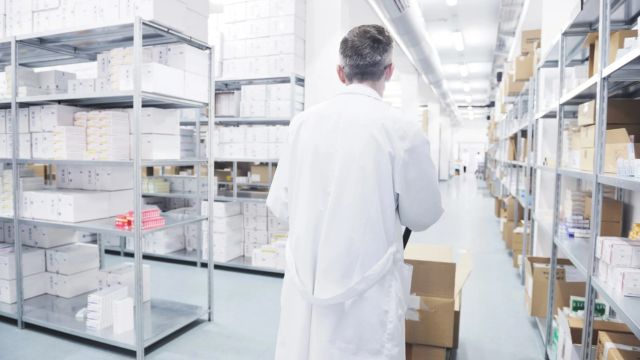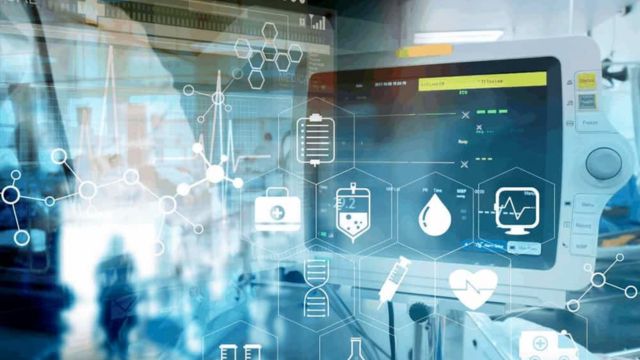Though in recent years technical developments have drastically changed how supplies are controlled, handled, and distributed, the medical supply sector has long been pillar of healthcare. Technology is simplifying tasks, increasing accuracy, and boosting productivity in previously unthinkable ways from the dawn of automation to the integration of artificial intelligence. Along with helping suppliers, this revolution guarantees that patients and healthcare providers have the best items available in the most timely and economical ways. The main technical developments altering the distribution of medical supplies will be discussed in this paper.
1. Warehouse and Distribution Automaton
The medical supply distribution method has seen a revolution from automation. Automated storage and retrieval systems (AS/RS) help warehouses to be more effective than they have ever been. By picking, storing, and arranging medical goods using robotic arms and conveyor belts, these systems lessens reliance on human labor and lowers mistakes.
Critical in the medical profession, where fast delivery of medical supplies can mean the difference between life and death, this technology accelerates the whole process of completing orders. By means of real-time updates, which enable businesses to precisely monitor their stock levels and so guarantee never running out of vital goods, automated solutions are also boosting inventory management.
2. Demand Forecasting with AI and Machine Learning

Demand forecasting accuracy is being much improved by artificial intelligence (AI) and machine learning (ML). Predicting the demand for particular products presents a difficulty for medical suppliers since it relies on several elements including hospital needs, seasonal variations, and unanticipated health crises (like the COVID-19 epidemic).
Demand forecasting applications driven by artificial intelligence examine past performance, trends, and outside events to more precisely forecast future demand. These instruments assist businesses keep ideal inventory levels by foreseeing supply chains interruptions and shortages. This implies that, without overstocking or running out of, healthcare practitioners get the goods they need exactly when they need them.
Moreover, understanding regulatory compliance is crucial for manufacturers in the medical supply chain. For a detailed guide on navigating FDA and ISO standards, check out our article on Regulatory Compliance for Medical Device Manufacturers: Navigating FDA and ISO Standards.
3. Transparency and Security Blockchain
Because blockchain technology guarantees security and transparency, it is becoming popular in the medical supply distribution chain. Blockchain lets every transaction be logged and checked in real-time by means of a distributed ledger system. This technology guarantees authenticity and origin from reliable sources by offering an unchangeable history of medical supply distribution.
Blockchain helps medical supply wholesalers to be traceable, which is absolutely essential for patient safety. Blockchain lets businesses track a product’s path back to its source in the case of a recall or contamination, thereby enabling fast removal of impacted goods from the supply chain and so minimizing any patient injury.
4. Real-Time Monitoring Internet of Things (IoT)
Another development transforming medical supply delivery is the Internet of Things (IoT). IoT-enabled items can track and monitor goods in real-time all through the supply chain. For instance, vaccinations and other medications are temperature-sensitive medical supplies that need be constantly watched to guarantee correct storage conditions. Should the temperature go beyond the allowed range, a real-time warning is set out to stop the delivery of either ineffective or spoiling goods.
IoT technology increases product safety and gives medical supply dealers additional view as well. Real-time supply location and condition data helps companies to maximize their distribution channels and enhance delivery times, so guaranteeing that healthcare professionals get their goods when they most needed.
Along with advancements in technology, there’s also a growing focus on sustainability in the medical supply industry. To learn more about eco-friendly alternatives, check out our article on Sustainable Medical Supplies and Eco-Friendly Medical Products.
5. Order Management Digital Platforms and E-Commerce
Digital ordering systems and e-commerce sites have streamlined the process by which medical professionals make supplies orders. These systems give more freedom and convenience by letting pharmacies, clinics, and hospitals place orders online. Furthermore, accessible to these digital platforms are comprehensive product catalogs, fast invoicing, and simpler bulk ordering.
Medical suppliers can better handle customer connections by means of these digital channels, thereby offering customised recommendations depending on order history and particular requirements. The systems also let medical professionals monitor their orders in real-time, therefore guaranteeing their knowledge all through the supply chain process.
6. 3D printing for bespoke medical supplies
Another ground-breaking invention sweeping through the medical supply sector is 3D printing. Customized medical items on demand printing capabilities allow healthcare practitioners to give individualized treatment. Custom prosthesis, implants, and surgical equipment catered to a patient’s specific anatomy can be produced, for instance, via 3D printing.
Faster production and distribution of tailored medical products made possible by this technology replaces long lead periods and large-scale manufacturing, therefore saving Furthermore, 3D printing can be more affordable for producing customized medical equipment that would otherwise be quite costly and helps to cut waste.
For a deeper understanding of how medical supplies directly impact patient safety and the overall quality of care, be sure to read our article on The Impact of Medical Supplies on Patient Safety and Care Quality.
Conlusion
As we can observe, changing medical supply distribution is mostly dependent on technology. From blockchain for security and IoT for real-time monitoring to automation and artificial intelligence-powered forecasting, these developments are enhancing the accuracy, safety, and efficiency of the whole supply chain. By using these technologies, medical supply distributors not only enhance their processes but also guarantee that healthcare practitioners have access to the essential goods they need to offer patients with the finest treatment.
At J&J Supplies, we see how crucial consistent, fast medical supply delivery is. Driven by the most recent technologies, our sophisticated distribution techniques guarantee that you will always have premium items when most needed. Explore our extensive array of medical products and get first-rate service by visiting our website right now!








